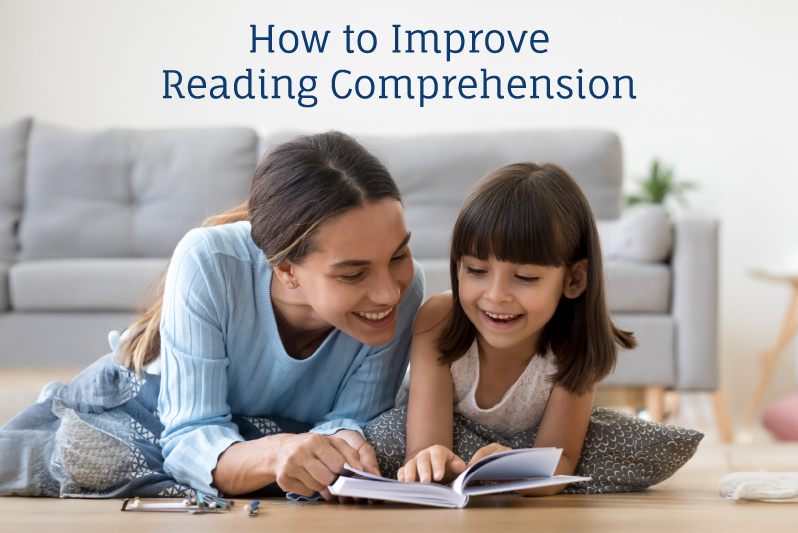
Does your child feel overwhelmed by reading or struggle to stay focused and motivated to complete their assignments? These challenges are more common than you think and can significantly impact academic performance and confidence. Many people face difficulties with reading comprehension, which can make academics and everyday life more difficult. Strong comprehension skills are the key to unlocking academic success and making learning more engaging and enjoyable. Whether you’re a student, teacher, or parent, building strong comprehension skills is essential for long-term success.
In this article, we’ll discuss the importance of reading comprehension, address common obstacles, share effective strategies for enhancing these skills, and explore the support available to help individuals excel in this critical area.
Why Is Reading Comprehension Important?

Reading comprehension goes beyond simply reading or decoding words on a page or understanding the individual meaning of words; it involves understanding, interpreting, and deriving meaning from written texts. This essential skill is critical in everyday life and profoundly impacts academic achievement and daily life. Strong reading comprehension skills enable individuals to engage with a variety of texts, extract important information, and grasp the overall message or the main idea. Here’s why it matters:
Academic Success: Good reading comprehension is foundational for understanding textbooks, articles, and other educational materials. It helps students grasp new concepts, expand their knowledge, and perform well on exams.
Effective Communication: In an information-driven world, comprehending written materials is crucial for staying informed, making decisions, and contributing to discussions. It also enhances critical thinking and problem-solving, allowing individuals to analyze and evaluate ideas, concepts, and the world around them.
Reading comprehension struggles can be a primary cause of poor academic performance, which in turn can reduce motivation and diminish self-esteem for students. On the other hand, strong reading comprehension can be a primary cause of individuals becoming lifelong learners, effectively navigating complex information, and thriving in school, work, and life.
Understanding Reading Comprehension Challenges

“Clinical research and experience over the last thirty years indicate there is a separate comprehension weakness that is rarely identified. This weakness often undermines the reading process…It is weakness, based in the sensory system, in creating an imaged gestalt.”
~ Nanci Bell, co-founder of Lindamood-Bell and author of the Visualizing and Verbalizing program
Reading is an integration of processing skills: word attack, sight word recognition, contextual fluency, oral vocabulary, and comprehension. Three sensory-cognitive functions underlie both reading and reading comprehension:
- Phoneme awareness: the ability to auditorily perceive sounds within words.
- Symbol imagery: the ability to create mental imagery for sounds and letters within words.
- Concept imagery: the ability to create an imaged gestalt (whole) from oral and written language.
While individuals may have differences in their abilities, the processes needed for reading are not different. Sensory-cognitive functions can be developed, changing an individual’s ability to read and comprehend. Independent reading and comprehension begin with concept and symbol imagery. An individual must use sensory input to monitor and self-correct as they read.
Concept imagery is the foundation for reading comprehension and critical thinking for individuals of all ages. This integration of imagery and language enables higher-order thinking skills, enabling students to make inferences, analyze critically, and gain a richer understanding of what they read.
Students with weak concept imagery often process “parts” of information they read or hear, but not the whole. This causes weakness in:
- Reading comprehension
- Listening comprehension
- Critical thinking and problem-solving
- Following directions
- Memory
- Oral language expression
- Written language expression
- Grasping humor
- Interpreting social situations
- Understanding cause and effect
Support for Improving Reading Comprehension
At Lindamood-Bell, we specialize in providing evidence-based instruction to help individuals develop strong concept imagery. Through targeted instruction, we unlock each student’s potential in reading and learning.
The Visualizing and Verbalizing® (V/V®) program develops concept imagery as a basis for improving reading comprehension and developing higher-order thinking skills. The development of concept imagery improves reading and listening comprehension, memory, oral vocabulary, critical thinking, and writing. Research data collected on more than six thousand students between 2008 and 2023 has shown that intensive, sensory-cognitive instruction can significantly impact reading comprehension.
Results of Students Who Received Comprehension Instruction Only

On average, students who received Visualizing and Verbalizing® instruction achieved significant improvements in areas associated with language comprehension. They made large (statistically significant) standard score changes on two of the three measures. Additionally, the 22-point percentile increase in Written Language Comprehension moves these students from a deficit condition to well within the normal range (25th– 75th percentile).
Year: Jan. 2008 – Dec. 2023
Number of Students: 6,462
Average Age: 12.4
Average Hours of Instruction: 103.8
Lindamood-Bell Instruction Implemented: Visualizing and Verbalizing
Student Success Profile
Hear from a Lindamood-Bell family who have experienced the positive effects of our one-to-one instruction on their child’s reading comprehension. A mother of twin boys describes their academic challenges and triumphs. Lindamood-Bell instruction improved their ability to read and comprehend. They now have better skills and confidence in school.
Although a child may need instruction to overcome a reading comprehension deficit, you can support reading comprehension at home by incorporating these activities:
Engage Actively With the Text
Active reading involves interacting with the material rather than passively skimming. Encourage students to visualize concepts and ideas as they read. Techniques like those in the Visualizing and Verbalizing® program can help create mental pictures that enhance understanding and recall.
Prepare Before Reading
Before starting a text, set the stage for success by activating prior knowledge and reviewing key vocabulary. Pre-reading activities such as scanning headings, identifying unfamiliar words, and considering the topic help establish a solid foundation for comprehension.
Monitor and Reflect While Reading
Continuously check for understanding by pausing to visualize key ideas and ensuring mental images align with the content. Asking questions and connecting to prior knowledge can deepen engagement and clarify meaning.
Combined with a tailored approach to addressing individual needs, these strategies can make a lifelong difference in a student’s reading abilities.
Get Started

Ready to improve your student’s reading comprehension? Lindamood-Bell is here to help. Our learning centers provide the instruction needed for success. We begin with a comprehensive Learning Ability Evaluation to identify the root causes of comprehension difficulties. This evaluation provides valuable insights into each student’s unique needs, guiding us in creating a personalized instruction plan that addresses their challenges and builds a strong foundation for success.
Learn more and schedule an evaluation today. You may also call us at 800-233-1819 or request information.





